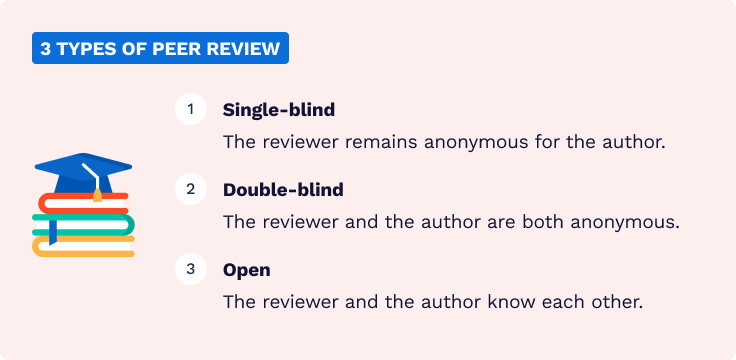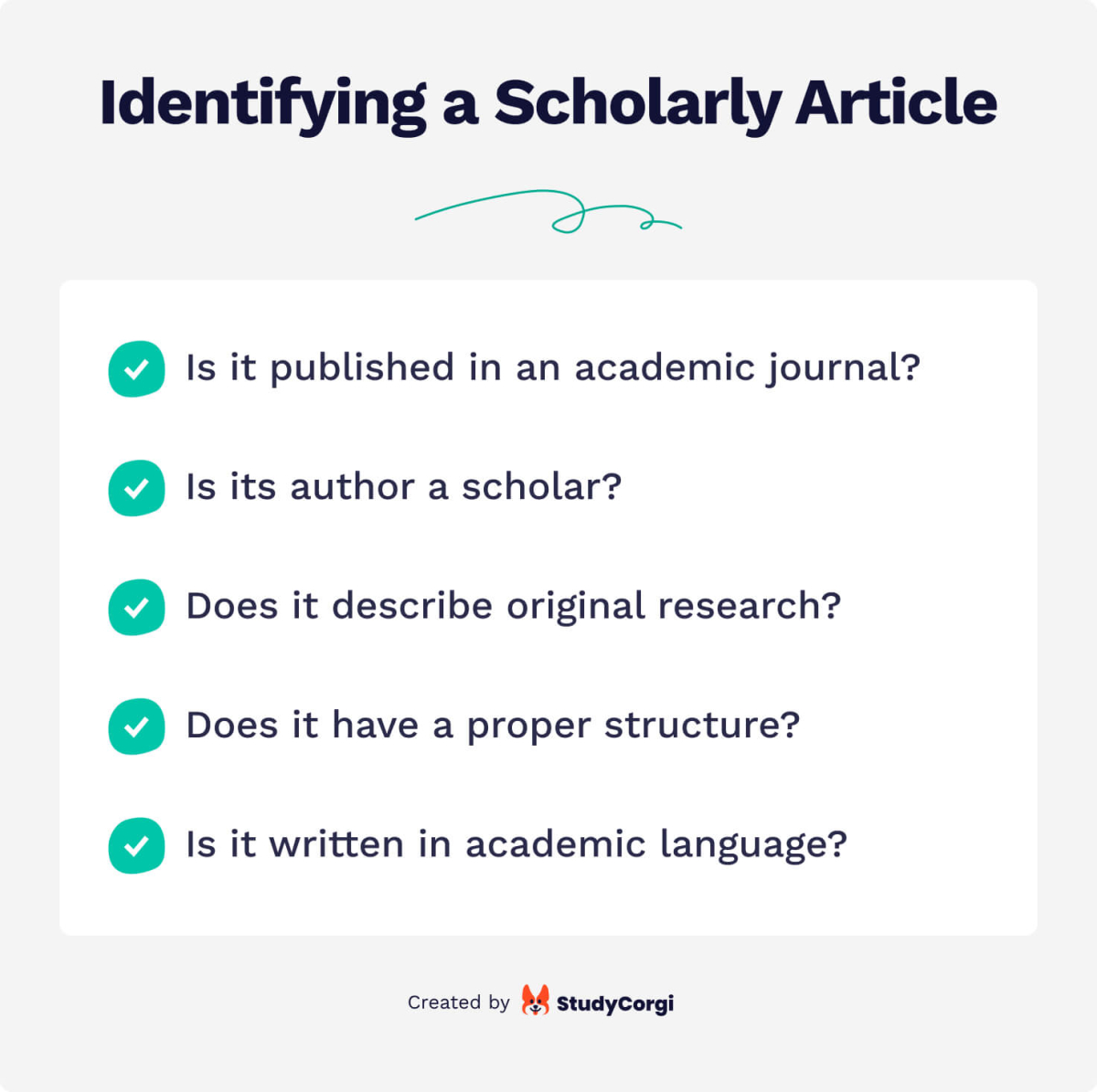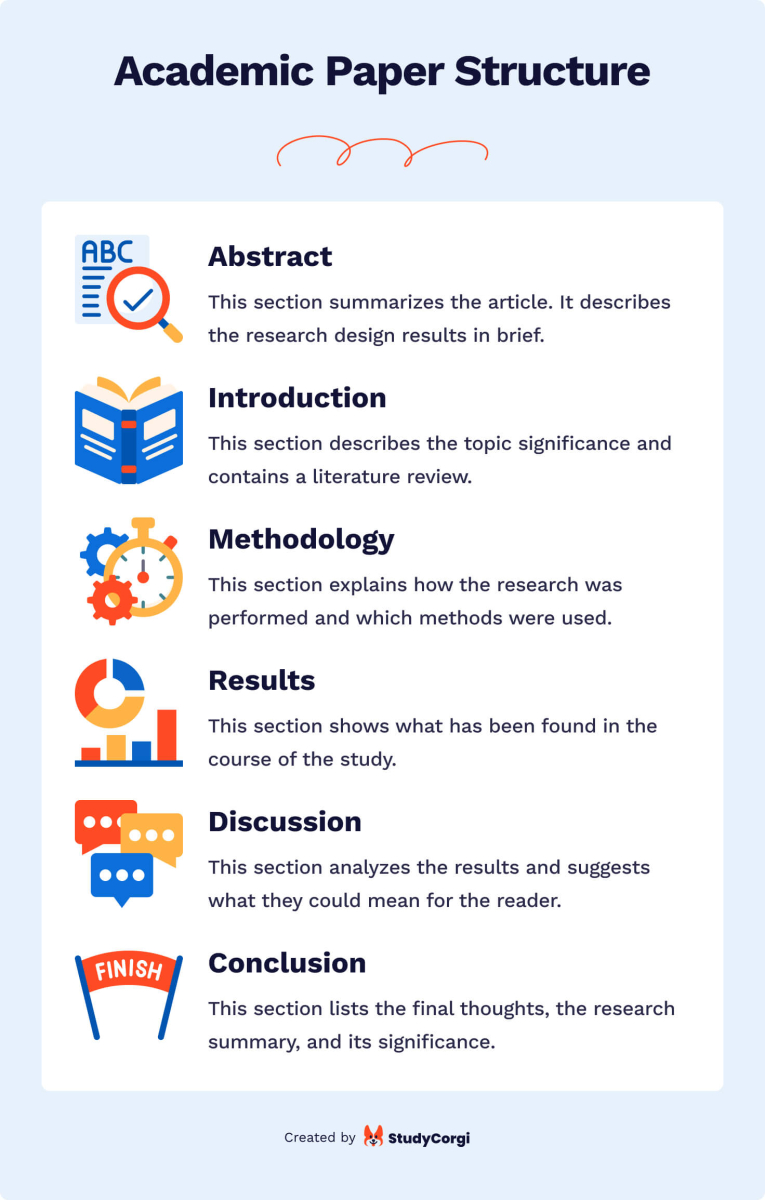As you can imagine, reading a scholarly article is very different from reading a novel. Unlike a novel, there is no need to read every word of a scholarly article. You don’t have to read everything in order either. But to write your own academic paper, you should know how to effectively read and refer to other scholars’ texts.
We will walk you through an explanation of a scholarly article, including its structure, distinctive features, and potential pitfalls. Moreover, you will learn the most efficient way to read a scholarly article in order to increase your reading comprehension and save your valuable time.
🎓 A Scholarly Article: What It Is, & What It Is Not
Scholarly articles present the results of research so that professionals in the same field can trace and evaluate other authors’ ideas. With rare exceptions, articles are published in specialized scholarly journals after a thorough revision.

Scholarly articles are the best resources to use in your bibliography for several reasons:
- A standardized structure allows you to locate the necessary data quickly.
- Strict quality requirements, in combination with the peer review process, make them a reliable source of information.
- A relatively small volume of text lets researchers produce many scholarly articles in a short time. Thus, other professionals who follow that genre of research are kept updated.
Many young researchers confuse scholarly articles with other academic publications. To make sure you are not one of them, remember that a scholarly article:
Scholarly Publishing: A Very Brief History
- Journal littéraire général, created in 1663, was the first scholarly journal. It was never published.
- Le Journal des sçavans was the first European academic journal. The first issue appeared on January 5th, 1665.
- Philosophical Transactions of the Royal Society was established in 1665 as the first journal wholly devoted to science.
- Medical essays and Observations appeared in 1773 as the first peer-reviewed scientific journal. The aim was to increase the quality and relevance of submissions.
- Postmodern Culture was created in 1990 as the first online-only scholarly journal.
- PLOS One was the first mega journal (an open-access journal with low selectivity) that appeared in 2006.
Peer Review: The Benefits & Drawbacks
Scholarly peer review (or refereeing) is a revision of research findings or academic articles by other experts in the same field.
As a result of peer review process, the journal’s chief editor learns which pieces deserve attention and which pieces can be published with corrections.
The benefits of peer review are numerous. Here are some of the principal advantages:
- It combines the knowledge of other researchers for everyone’s mutual benefit;
- It establishes the research’s validity;
- It prevents journals from accepting falsified work;
- It provides valuable feedback to improve the article before publication;
- It allows the editors to select the best articles based on objective and independent expert reviews.
Peer review practice is evolving, but the following three types remain the same.

- Single-blind: the reviewer remains anonymous to the author. This is most prevalent in physical and life sciences.
- Double-blind: the reviewer and the author are anonymous to each other. This is typically done for social sciences and humanities.
- Open: all the participants know who the reviewer and the author are. This method is not very popular now, but some journals publish peer reviews along with the article.
It should be noted that the open peer review method emerged in response to the criticism of anonymous peer review because the latter was thought to lack accountability and encourage the reviewers and editors to abuse the process. Moreover, a blind review can be biased and inconsistent.
Apart from these specifics, scholarly peer review also has the following drawbacks:
- It delays the publication of the article.
- It consumes the time that researchers could have used for additional research.
- The “trouble-shooting” efficiency of peer review is widely questioned.
- It may hinder new ideas and protect established opinions.
🕵 Is an Academic Article a Good Source?
Researchers believe that scholarly articles are the preferable source of information for new academic texts. And they have a point. Despite its drawbacks, peer review ensures the highest reliability of research findings.
Below, you will find more arguments supporting the idea that academic articles are good scholarly sources.
Scholarly vs. Popular Sources
Scholarly materials include books by University Presses and articles from peer-reviewed journals. We can call every other source a popular one.
However, in reality, it all depends on the topic. For instance, a literary essay or a content analysis of the latest news presupposes working with popular sources in the first place. There is a general rule here.
The more specialized your project is, the more you will have to restrict yourself to expert and scholarly resources.
Academic Articles vs. Books
The real difference between academic articles and books is that books are longer and broader. For a memorable example, let’s recall the Harry Potter series. The book covers the general structure of the wizarding world but says nothing about the teaching staff hierarchy. On the contrary, a scholarly article would fully explore this narrow field.
Another significant drawback of books is that they never provide information as current as scholarly articles. It takes years to publish a book, and meanwhile, new research is always appearing.
✅ Identifying a Scholarly Article: A Checklist
In this section, you’ll find a checklist that will help you determine if a text is a scholarly article worth citing.

- Is it published in an academic journal? Make sure:
- The journal does not entertain or persuade its readers.
- Its primary purpose is to share new knowledge.
- In the case of an online journal, it has minimal color and advertising.
- Is its author a scholar? Make sure:
- The author has degrees or credentials (Ph.D., M.D., etc.).
- The author is affiliated with a university, hospital, or another knowledge-based organization.
- Does it describe original research? Make sure:
- The text deepens your knowledge of the given topic.
- The scope has a narrow definition.
- The subject is theoretical or technical.
- The contents are analytical and based on research.
- Does it have a proper structure? Make sure:
- The article starts with an abstract.
- Its sections include the study purpose, design, findings, and discussion.
- It is more than five pages long.
- Is it written in academic language? Make sure:
- The language is formal and includes professional jargon.
- The reader needs a sufficient level of knowledge to understand the article.
- The text has an objective point of view and an argumentative tone.
- The text contains many academic citations supporting its claims.
❗ Using Academic Articles as Sources: 4 Things to Consider
Let’s say you were told to use scholarly articles and even found some that match your topic. Now it’s time to sieve away the irrelevant and improper sources. There are four pitfalls to consider: whether the article and journal are scholarly, timely, and fit your theoretical framework.
Not All Texts Published in Academic Journals Are Scholarly Articles
Did you know that academic journals can publish book reviews? They are an invaluable source of information on recent scholarly books, but analysis of older texts can also appear from time to time.
You can primarily benefit from book reviews. They save time by providing an in-depth impression of a large-scale publication without the need to read it from cover to cover.
However, we strongly discourage you from referencing book reviews in your papers. In the academic world, it is considered incorrect.
Why so?
Because the analysis of the article does not contain the original research and findings. Thus, give credit to the scholar by citing the book instead.
Not All the Journals Are Good
The number of articles a researcher has published is one of the main criteria for their success. But as everyone knows, quantity is not always the same as quality. The race for new articles has given rise to predatory publishing.
A predatory journal prioritizes financial gain at the expense of academic excellence and scientific significance. In other words, it takes money from researchers to publish almost anything they submit without editing or peer revision.
But as Nature wrote, it is hard to tell a scholarly journal from a predatory one. Thus, before including a publication in your bibliography, check Beall’s list of Potentially Predatory Journals. This database is regularly updated with unreliable journals according to twenty-six criteria.
Why are predatory journals so harmful? Here’s a brief list of their adverse effects:
- Publishing an article in one of them can damage your reputation as a researcher.
- They tolerate plagiarism. Anyone can take your properly written article from a reliable scholarly journal, edit it and publish it in a predatory journal.
- They send repeated e-mails to solicit submission. One journal published an article consisting of “Get me off your f****** mailing list” repeated 863 times, including a flow chart, graph, headings, and abstract.
- Unknowingly, you can spend considerable money to get a publication that will add nothing to your CV.
- Students often quote articles from predatory journals and then must spend time correcting such references. They can also get a lower mark if a mistake is found after the final submission of their paper.
Some of the Sources May Be Considered Outdated
The rule about a bottle of milk should come to mind when choosing an article to cite: always check the expiration date! Although you may think articles never expire, we have some bad news. They do, and the “best before date” varies across disciplines and assignments.
Thus, academic sources can be timely or outdated. But there is no definite line separating them. Students often come across a standard recommendation to use articles no more than 5 years old. However, most seminal research publications remain timely for decades.
The best way to know if the article’s shelf life is satisfactory is to keep your subject in mind:
- Articles in physics, medicine, and biology often become outdated within 1-2 years. These spheres are widely researched, and each new finding can change the entire direction of future explorations.
- In arts, literature, linguistics, and other humanities, 5 to 10 years are acceptable. Any analysis of Dickens’ or Shakespeare’s works is worth attention.
In any case, we recommend you consider your professor’s instructions first in all instances.
Not Every Article Will Fit Your Theoretical Framework
Academia has its own drama. Nowadays, social sciences and philosophy are the most dramatic battlefields, as spirited discussions arise from different theoretical frameworks.
A theoretical framework comprises the following:
- Concepts and their definitions;
- References to scholarly literature;
- Existing theories that apply to your particular research.
To find a theoretical framework for your paper:
- Read into the coursebook and the suggested list of references;
- Make a list of the central ideas and determine if different authors agree about them;
- Categorize their opinions and think about which you consider timelier and more reasonable.
The choice of a theoretical framework will define your point of view. You should also select the articles based on this principle.
Once you have decided on the topic, discuss the theory with your professor to find out their opinion. This will secure their support down the road.
🤓 How to Effectively Read a Scholarly Article?
With little experience, reading a scholarly article can remind you of studying literature in Old English. The reasons are numerous: multi-syllable words, unfamiliar terms, complex concepts, scientific jargon, and high information density. But there is no need to scrutinize the entire article. Here’s how you can improve the efficiency of your reading.
Academic Paper Structure
From this section, you’ll learn more about the typical structure of an academic paper.

- The abstract summarizes the article. Here, you can learn about the research results in brief. Note that you should never cite the text from the abstract. You should find the respective part in the body of the article and reference it correctly.
- The introduction describes the researched topic and its relevance. It answers the question of why anyone should care about the issue.
- The literature review is a regular part of an introduction. Here, the researcher outlines where the science stands currently and in what direction it could go.
- The methodology explains how the research was performed and which materials were used. If needed, any professional should be able to reproduce the study following this section.
- The results show what has been found in the course of the study. This is the most critical part for the reader.
- The discussion highlights what the authors consider essential about their study. Here, they analyze the results and suggest what those could mean for the reader.
- The conclusion lists the final thoughts. These may include the contribution of the research, its implications, strengths, weaknesses, and recommendations to the readers.
How to Read a Scholarly Article Step by Step
The most efficient way to read a scholarly article is to keep in mind your research question. At each of the following steps, ask yourself if the text matches.
Step 1: Topic & Abstract
Find out what the hypothesis or thesis statement is. Does it fall under your area of research? If not, you can discontinue the reading and choose another article.
Step 2: Introduction & Conclusion
You have learned that the author’s topic relates to your research. The article’s intro and outro provide more concise details on the subject matter. In addition, if the introduction contains a literature review, you can include the same books and articles in your list of references. There are 2 questions you should answer upon reading the introduction and conclusion:
- Is the research unique?
- Will I find something new on my research topic here?
Step 3: Discussion
This is where you can find the theoretical framework. Here, you should find out the following:
- Do you like how the author approaches the problem?
- Does your professor approve of their thought process? (If you have any doubts, ask your professor or choose another article).
- Does their argument have any weaknesses? (Make sure to avoid those shortcomings in your work).
Step 4: Methodology & Results
If you have read until this point and are satisfied with the article so far, it is time to start taking notes. These two sections will help you only at an advanced research level.
🔍 Where to Look for an Academic Paper?
The Internet has allowed us to find much of the necessary literature from the comfort of our homes. The majority of prestigious colleges and universities provide institutional subscriptions to their students. This feature allows access to an infinite volume of academic materials. Still, a lot can be found online, even without a subscription.
Google Scholar
- Google Scholar is not the same search engine as Google. The former only suggests academic results. If you were told “not to use Google,” this engine is still okay.
- It browses through millions of online scholarly databases, just as if you visited a college library.
- It functions just like traditional Google: the most relevant results come first. Also, the engine considers how many times the given material has been cited in other places.
- If you need access to the entire document, look for an HTML or PDF link on the right or an “Online Resources @ SHSU” link.
Academic Research Databases
These resources accelerate the search for scholarly literature. Their most significant benefit is checking the publications for reliability before adding them to the list. Below you will find the three best options for academic research databases (although there are dozens more).
Scopus and Web of Science are the two most famous academic database giants covering every possible discipline.
Most educational institutions usually provide free on-campus access to at least one of them. Full access to these databases is possible only through institutional subscriptions. In Scopus, you can look through journal rankings and authors’ profiles. The resource contains about 71 million items. Web of Science features over 100 million items. Unlike Scopus, it doesn’t provide a limited free preview.
JSTOR offers almost 12 million items in 75 disciplines. They collaborate with libraries to connect students to important content and provide researchers with free or inexpensive access to professional literature.
Students in humanities will appreciate access to high-quality primary sources, including maps, photos, and artworks.
Academic Publishers
A list of all academic publishers could fill an entire book. The most respected publishers are those of top universities. Below we list some of the oldest and largest academic publishers:
- Cambridge University Press is the oldest academic publishing business in the world (since 1534). Its offices are located in more than 40 countries. Their scholarly and educational literature features over 50,000 publications.
- The University of Chicago Press is the oldest academic publisher in the U.S. It produces 80+ journal titles in a broad range of disciplines with only peer-reviewed publications.
- Sage Publishing in Newbury Park, California, features over 1,000 journals on humanities, social sciences, business, and technology. Medical students will benefit from their numerous life, biomedical, and health science journals.
- Taylor & Francis is an international UK-based publisher with over 2,700 journals. Its Routledge imprint is the largest academic publisher in humanities and social sciences. CRC Press imprint specializes in science, technology, and mathematics.
In conclusion, always remember that your academic effort makes a difference, no matter how small. It is your responsibility to do a good job so that other scientists can build on your study. Be careful when selecting your sources, as not all of them are scholarly or applicable. We hope that our advice will assist you in your research project.
